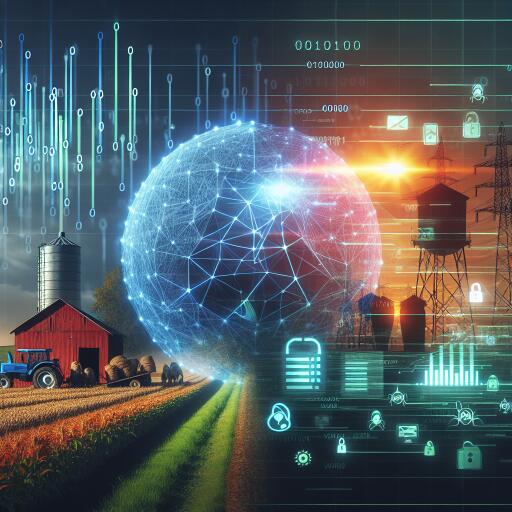Rapid Digitalization in Agriculture Introduces New Cybersecurity Challenges
The integration of advanced technologies such as artificial intelligence (AI), robotics, and the Internet of Things (IoT) within the agricultural industry is revolutionizing how food is grown, harvested, and distributed. These technological advancements are addressing critical issues like labor shortages and the impacts of climate change, propelling the sector towards efficiency and sustainability. However, with these benefits comes a heightened vulnerability to cybersecurity threats that could jeopardize the entire food supply chain.
As the agricultural sector becomes increasingly digitized, it is grappling with a surge in cyberattack incidents, particularly ransomware attacks that target food suppliers and distributors. Such attacks not only disrupt the timely shipment of produce but, in severe cases, threaten the security of the food supply chain itself. A recent report by a leading data and analytics company forecasts that, given the current trajectory, the cybersecurity industry’s value will soar to $290 billion by 2027, boasting a compound annual growth rate (CAGR) of 13% from 2022 to 2027.
The move towards digitalization in agriculture is motivated by the necessity to enhance productivity amidst diminishing labor forces. Robots that can be operated remotely are being introduced to aid human workers, bringing efficiency but also new vulnerabilities, including increased opportunities for cyberattacks. Agricultural technology is not just limited to traditional farming equipment; it now encompasses sophisticated devices that merge hardware with intelligent software, such as AI-powered tablets integrated into farm machinery.
Notable industry leaders, including agricultural machinery giants, are prioritizing cybersecurity, focusing on safeguarding their high-tech equipment against potential breaches. The significance of incorporating robust security measures cannot be understated, especially as these technologies become integral to farming operations. For instance, tractors equipped with advanced computing capabilities are a testament to the industry’s shift towards cyber-physical systems, which, while innovative, necessitate comprehensive security protocols to protect user data against unauthorized access.
The imperative for cybersecurity spans the entire agricultural supply chain, which relies heavily on digital technologies for the processing, harvesting, and distribution of food products. This extensive network is susceptible to cyber threats, which can have far-reaching consequences, including the risk of food shortages, price hikes, and the spoilage of perishable goods. It is crucial for companies within this sector to recognize cybersecurity as a vital aspect of their operational integrity, ensuring the safeguarding of critical data throughout the supply chain.
To mitigate these risks, agricultural companies must adopt a proactive approach towards cybersecurity, implementing measures that can prevent, detect, and respond to cyber threats effectively. This includes investing in secure communication channels, data encryption, and regular system updates, along with training staff on the importance of cybersecurity and how to identify potential threats. Such strategies are essential not only for protecting the industry’s digital infrastructure but also for ensuring the continuity of food supply chains worldwide.
In conclusion, as the agriculture sector continues to embrace technology, the need for robust cybersecurity measures has never been greater. By prioritizing the protection of digital assets and operations, the industry can secure its place in a future where technology and farming go hand in hand, free from the threats posed by cybercriminals.










